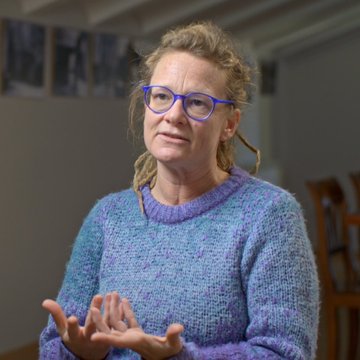What are nature-based solutions?
It is almost a year since a worldwide agreement to protect Earth’s biodiversity was reached (at long last). Its official name is the Kunming-Montreal Global Biodiversity Framework, but it was presented as the 30x30 agreement because it calls for 30% of nature to be under protection and 30% of degraded ecosystems under effective restoration by 2030. Among the measures the agreement says should be taken to meet those targets, one that particularly stands out (due to being mentioned more than once) is the use of nature-based solutions. Additionally, European policies on adaptation to climate change propose that nature-based solutions be incorporated into the Sustainable Development Goals and, to make young people more aware of them, into education curricula. Here, we explain what nature-based solutions are and why they are crucial to ecosystem restoration and the prevention of biodiversity loss. We also give some examples of those we study at CREAF.
Nature offers smart solutions; humans, on the other hand, have not always done so. Disconnected from nature, we have all too often turned to technology or cement to overcome challenges.
Throughout history, nature has adapted to solve problems. When finches have needed to open certain kinds of seeds to eat, natural selection has seen them develop a suitably shaped beak. If a type of forest is highly dependent on atmospheric and soil moisture, the trees that grow there will have very broad crowns. Nature offers smart solutions; humans, on the other hand, have not always done so. Disconnected from nature, we have all too often turned to technology or cement to overcome challenges. For instance, instead of planting trees to provide shade to keep us cool, we have erected high walls and placed metal canopies between them. Most technology-based solutions are expensive, have an environmental impact, and solve just a single problem. In contrast, nature-based solutions are not only effective but also designed to solve a human problem and return ecosystems to good health at the same time. They are a strategy for re-establishing the functions of nature, restoring our planet, and boosting our resilience to the climate crisis.
It is precisely because of their penchant for regreening and environmental restoration that nature-based solutions are also called green solutions, as opposed to the grey solutions (involving cement, construction sites, technology, etc.).
It would be of enormous benefit to our planet and ourselves to have nature in rude health and working to capacity, unhindered in its ability to produce fruits and wood, filter water and air, and sustain flora and fauna. Making use of nature instead of bricks and machines can reduce the risk of natural disasters, increase crop productivity, prevent human health from deteriorating, and mitigate climate change. We need nature intact to protect us from the future looming on the horizon. And it is precisely because of their penchant for regreening and environmental restoration that nature-based solutions are also called green solutions, as opposed to the grey solutions (involving cement, construction sites, technology, etc.) prevalent in environmental policies until now.
Three examples of nature-based solutions
(1) Recovering water without using more cement
The coast and its drainage basins, the numerous benefits of which range from water for drinking to sandy beaches for relaxing on, are one of the ecosystems worst affected by the ecosocial crisis. Unfortunately, we have been exploiting them with various grey solutions that cease to be useful as time goes by, such as concrete-lined canals and vast reservoirs. The harm done is reflected in the current shortage of water (which is attributable to more than just meteorological drought, despite the major infrastructures we have) and the fact that the coast is at breaking point and no longer protects us from flooding, large waves or storms, no matter how often huge cranes deposit sand there. CREAF researcher Annelies Broekman suggests rectifying the situation through measures that restore nature and have a long-term outlook, such as replenishing aquifers and using water more sustainably in industry and agriculture. In short, we need a change of mindset.

“Looking after our aquifers’ health and reducing consumption are the smartest ways to guarantee water reserves for future droughts.”
ANNELIES BROEKMAN, CREAF researcher and water management expert.
(2) Reducing the risk of avalanches and landslides
The loss of mature forests, changes in land use, and reductions in moisture and organic matter all erode the ground below our feet. Many of the solutions to such erosion put forward in the past – the majority of them technological and artificial – have clearly failed; nature-based solutions are beginning to offer a new way forward, however. Identifying the most suitable nature-based solutions for mountain environments was the objective of CREAF’s PHUSICOS project, which soil ecologist Pilar Andrés coordinated. Soil erosion in mountain areas poses a very high risk to people, as it increases the severity of avalanches, landslides, and the subsidence of roads and certain crops. Assessing the environmental impact new measures could have on an ecosystem is essential; be they nature-based or otherwise, measures can be applied mistakenly, and it would be wrong to assume that nature-based solutions are always the answer.
The PHUSICOS team spent four years analysing two sites in the Pyrenees and one in Italy. At the sites in the Pyrenees, there had been problems with rockfalls, which were solved through reforestation (or tree-planting): the trees’ roots and the extra organic matter they provided prevented erosion. The situation in Italy was more complicated. The site’s peat bogs were drying out. They were surrounded by farmland, so the soil contained large amounts of fertilizers, insecticides, and the like, and was probably exposed to low-quality water. Analysis of approximately 200 soil samples led to the conclusion that nature-based solutions would not solve the problem in this case, and that what was required was a good prevention strategy and a reduction in pollutants in the area. This is a helpful reminder that nature-based solutions cannot just restore soil as if by magic; the key is to avoid such an alarming degree of soil degradation in the first place.

“The first step in tackling an environmental problem is to organize field work and decide what samples to take and why. An experimental approach is always necessary to avoid the application of ineffective solutions.”
ENRIQUE DOBLAS, scientific from PHUSICOS project.
(3) Revitalizing soil
The degraded, highly polluted state of our soils is a problem we urgently need to address. Some soil restoration techniques revolve around chemical products; others involve the use of artificial structures for water and nutrient retention. However, CREAF researcher Vicenç Carabassa favours nature-based solutions. He uses different organic materials with the aim of restoring degraded soil in rubbish dumps, quarries and other sites, and returning it to a natural state. The restoration technique he uses generates newly created soils, which are known as technosols, and improves soil health. Another material that can be used for soil restoration is biochar or biocarbon, which is made from plant debris and biomass waste. Biochar is applied to soil directly and does not burn like normal coal; furthermore, it improves soil fertility and stimulates microbial activity.

“We have been studying different types of organic amendments for years, because we need detailed knowledge about how they affect each type of soil, what doses are necessary for restoration, and whether they help with carbon retention.” VICENÇ CARABASSA, CREAF researcher.
In some cases, soil needs extra moisture rather than additional nutrients to revitalize it. That is the basis of LIFE Nieblas, another of Carabassa’s projects, which involves using fog-water collectors to restore laurel forests in the Canary Islands. LIFE Nieblas is currently operating on 35 hectares of land in Gran Canaria, with the aim of collecting 215,000 litres of water per year. Once the project’s innovative technique has proven to be effective, the intention is to implement it in the Mediterranean basin and Portugal to combat desertification. Re-establishing quality vegetation on degraded land helps to maintain soil structure and optimize moisture, even if there is no rain.
My grandfather used to tell me that the gifts of nature could be used in numerous ways. For example, he planted fruit trees in the garden of his house because they provided not only fruit to eat but also plenty of shade in the summer. That clearly beats installing metal structures that are expensive to make, buy, and maintain until they eventually break. It seems that our grandparents knew what they were talking about; if only we listened to them more.
REFERÈNCIES:
- European Commission, Directorate-General for Research and Innovation, Evaluating the impact of nature-based solutions : a summary for policy makers, Publications Office, 2021, https://data.europa.eu/doi/10.2777/521937







